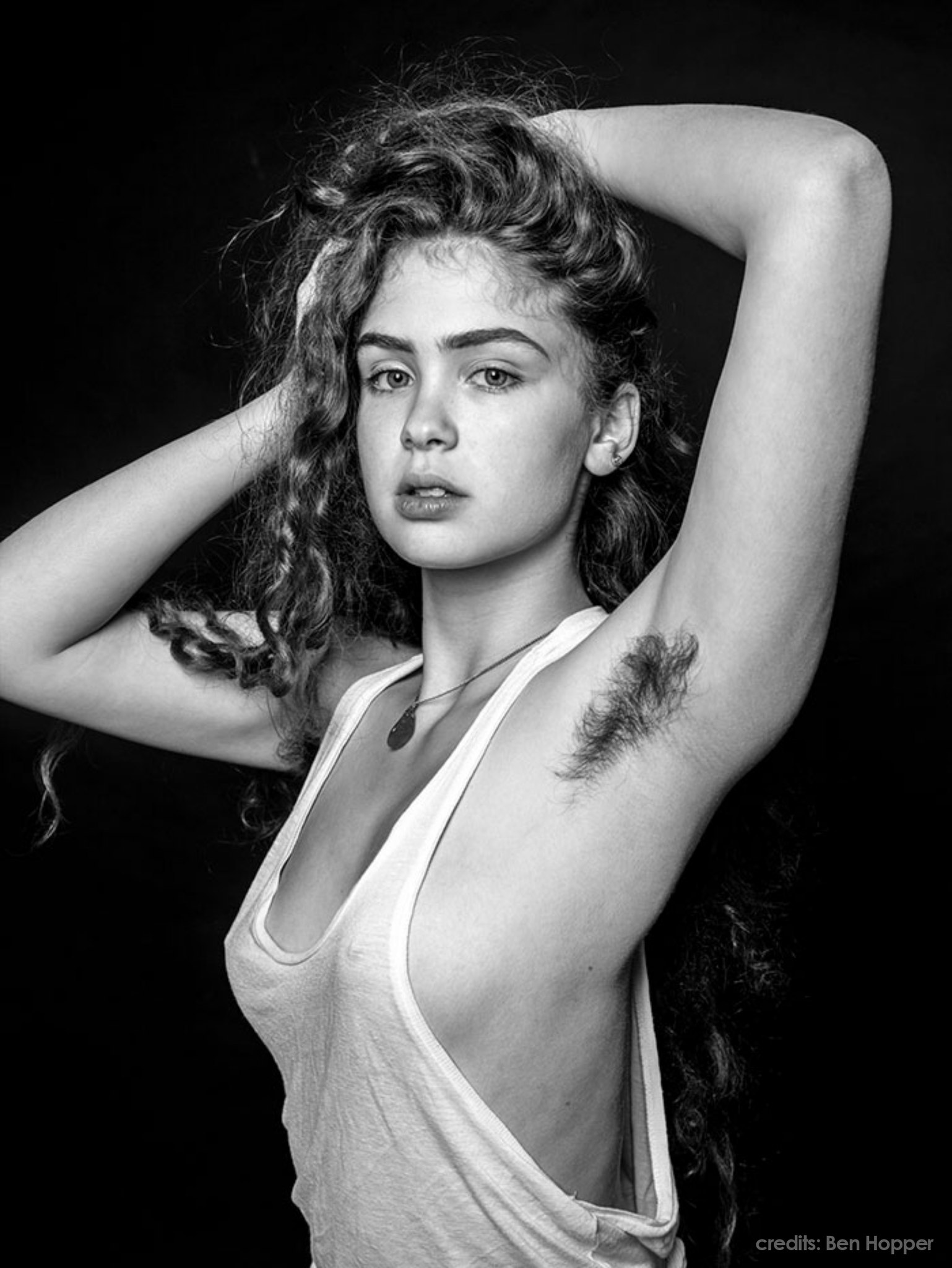A bold and thought-provoking photo series is challenging long-standing beauty norms by asking women to ditch their razors and embrace something often stigmatized—natural armpit hair. This artistic and cultural movement reexamines societal expectations of female grooming and offers an unapologetic space for body hair to exist not as something shameful, but as something natural.

Long before modern grooming tools like razors, lasers, and waxing kits became the norm, humans were already finding ways to remove hair from their bodies. The practice dates back to the Stone Age when men and women used sharpened stones or seashells to scrape hair away. Later, Charles Darwin’s theory of natural selection added a layer of pseudoscience to the conversation by suggesting that less body hair signified a higher stage of evolution. This led to a cultural association between hairlessness and attractiveness, making smooth skin a marker of desirability and social advancement.
By the early 1900s, this idea evolved into a societal expectation, and being hairless became a perceived feminine obligation. Body hair was no longer just something to remove—it became a symbol of neglect, a flaw to be hidden. Heather Widdows, author of Perfect Me: Beauty as an Ethical Ideal, told CNN that this stigma runs deep and persists today. “Most women feel like they have to shave, like there’s no other option. There’s something deeply fraught about that, even though perceptions are slowly changing,” she said. Now, a growing number of women are reclaiming autonomy over their bodies by challenging these beauty standards.
London-based photographer Ben Hopper has been at the forefront of this shift with his photo series Natural Beauty, which presents women in striking black-and-white portraits proudly showing their armpit hair. Hopper explained to Bored Panda that armpit hair is often seen as “disgusting, non-hygienic, grotesque, and very masculine,” and he wanted to confront that taboo head-on. His goal was not just to showcase women’s bodies in an unfiltered way, but to question the deeply embedded standards that dictate what beauty should look like in mainstream culture, particularly in fashion and film. Hopper’s series explores the stark contrast between what society defines as “fashionable beauty” and what he calls the “raw, unconventional look” of natural armpit hair.
He told the Huffington Post that he expects the images to surprise viewers—and that’s precisely the point. Since starting the project in 2007, Hopper has collaborated with a diverse group of models and actresses who have shared their deeply personal stories of self-discovery and empowerment. One model, known as Kyotocat, described the experience of letting her armpit hair grow out as liberating: “It felt like being able to breathe. It was incredibly comfortable, and I felt a confidence and boldness returning, like I was replenishing some kind of primal power.” Another participant, Sophie Rose, found humor and empowerment in breaking the norm: “You feel stronger for not giving in to the way you’ve been told to be. I really enjoyed people recoiling in disgust, it was funny.” Gabriela Eva grew her hair specifically for the shoot and noted how the experience evolved her perception: “It made me feel natural and vulnerable at first, and eventually empowered. I’ve grown accustomed to my armpit hair, and it makes me feel beautiful.” For others, like Sienna, the act wasn’t necessarily empowering but simply a return to comfort. “I don’t think refusing to shave should automatically be considered a radical act. I don’t want my body to be constantly viewed as a political space,” she said. Swedish actress Emilie Bostdt echoed this sentiment, writing that the need for growing body hair to be seen as political is, in itself, bizarre. “It’s weird that something as natural as armpit hair is viewed as a statement—but that’s exactly why it needs to be visible,” she stated. Although Hopper isn’t pushing for all women to grow their body hair, he wants to open up the conversation. “I’m not trying to tell women to start growing their armpit hair. I just want people to consider that it’s a valid option—and to question why beauty standards are the way they are,” he said. As more voices join the movement and projects like Natural Beauty gain visibility, the narrow definition of beauty begins to expand, allowing room for authenticity and diversity. Whether or not society is ready to fully embrace this change, one thing is clear: the conversation has begun.





